$6.60
An additional source of vitamin C containing essential oils. Sage is recommended to relieve bleeding gums; rendering antiseptic, anti-inflammatory, antimicrobic, expectorant, antispasmodic action, complex therapy of inflammatory diseases of the upper respiratory tract, oral cavity; to seal epithelial tissue; reducing the permeability of cell membranes, blood vessel walls and lymph nodes; to inhibit fungal activity; increase the secretory activity of the gastrointestinal tract. 15 tablets on 450 mg (in 1 tablet 25 mg of powder from sage leaves).
Salvia officinalis – shrub up to 50 cm tall, densely pubescent, with gray-green stems and leaves. Stems are numerous, branched, tetrahedral, densely pubescent, orescent at the base. Leaves petiolate, opposite, oblong or broadly lanceolate with a blunt tip, often at the base with one or two deeply incised whole blades (“ears”). The flowers are collected on 6-8 in the “whorls”, forming at the top of friable spica tyrsa. The corolla is double-lipped, blue-violet.
Chemical composition:
Sage leaves contain essential oil (up to 2.5%), the main components of which are l-a-thujone and d-b-thujon (about 50%). Among the monoterpenic components of the essential oil, 1,8-cyneol (up to 15%) is of particular value. In addition, the essential oil contains borneol, D-camphor, bronelatsitat, and also found triceclical borneol sesquiterpene cedrine. Sage leaves also contain diterpenes. The second group of ALS, among which is characterized by carnosol (picrosalvin), carnosolic acid, causing antimicrobial and bitter properties. The sage roots also contain diterpers, represented by royleanone (quinone), which has a red color. The tannins (up to 10%), which determine the astringent and anti-inflammatory properties of total preparations, can also be attributed to the active substances. Flavonoids are related to sage medicinal substances, derivatives of lutelin, apigenin, and salvigenin predominate. Among the phenolic substances of interest are also rosmarinic acid (phenylpropanoid). Sage leaves also contain triterpene saponins – ursolic oleic acid.
Recommended for use:
- for the effective destruction of germs that cause gums to bleed;
- to provide antiseptic, anti-inflammatory, antimicrobial, expectorant action. It has astringent properties;
- for the treatment of inflammatory diseases of the upper respiratory tract (tonsillitis, laryngitis, pharyngitis, etc.), oral cavity (stomatitis, gingivitis);
- to seal epithelial tissue;
- to reduce the permeability of cell membranes, blood vessel walls and lymph nodes;
- for the use of herbal antibiotic SALVIN. Salvin not only delays the reproduction of Staphylococcus aureus, but also inactivates its a-toxin, inhibits its hemolytic and dermatonecrotic properties;
- to suppress the fungal activity of sage essential oils;
- to increase the secretory activity of the gastrointestinal tract;
- to provide a slight antispasmodic action.
Composition:
Sage leaf powder 25 mg vitamin C – 12 mg, lactose. Attention! Contains sugar!
Contraindications:
Individual intolerance to the components during pregnancy and breastfeeding to consult a doctor.
Reception duration:
Adults take 1-2 dragees 3 times a day with meals, 7-10 days.
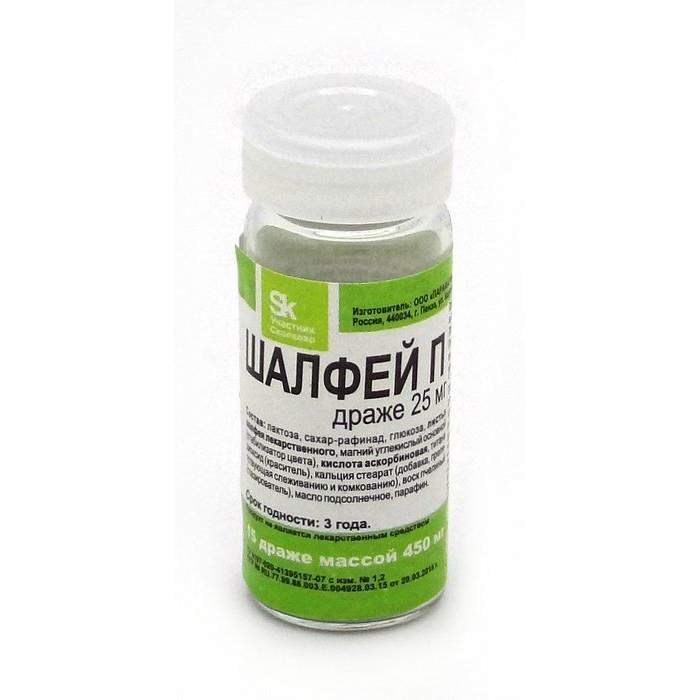
| Weight | 0.1 kg |
|---|


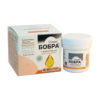


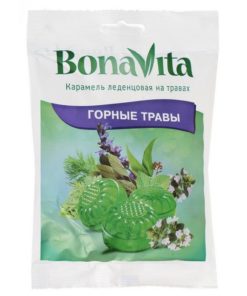

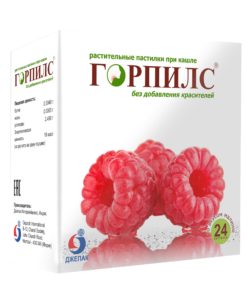
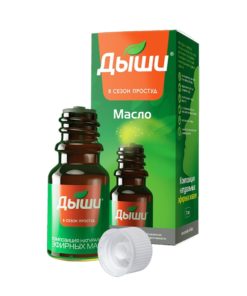
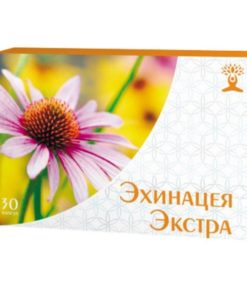

Reviews
There are no reviews yet.